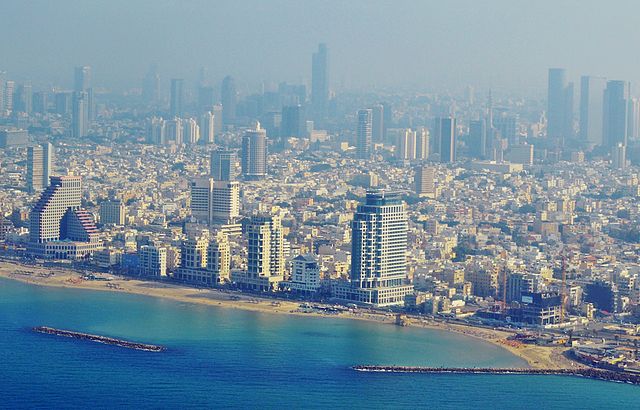Contemporary Tel Aviv is known for its vibrant nightlife, which offers dozens of pubs, restaurants and nightclubs. But a recent excavation mission shows that “the city that never sleeps” was already a party city in 3,000 BC!
SEE ALSO: Oldest Human Skull Outside Of Africa Discovered In Israel
Evidence indicating the presence of an ancient Egyptian population from more than 5,000 years ago is being exposed these days in a site in Downtown Tel Aviv, where the Israel Antiquities Authority is salvaging artifacts prior to the construction of office buildings by a local company. Fragments of ancient pottery vessels used to prepare beer were discovered during these excavations.
“We found 17 pits in the excavations, which were used to store agricultural produce in the Early Bronze Age,” Israel Antiquities Authority’s Diego Barkan said in a statement. “Among the hundreds of pottery shreds that characterize the local culture, a number of fragments of large ceramic basins were discovered that were made in an Egyptian tradition and were used to prepare beer.”
Ancient brewery indicates that the Egyptian Empire stretched all the way to Tel Aviv
Beer was the national drink of Egypt in ancient times, and it was a basic commodity like bread. Beer was consumed by the entire population, regardless of age, gender or status. It was made from a mixture of barley and water that was partially baked and then left to ferment in the sun. Various fruit concentrates were added to this mixture in order to flavor the beer. The mixture was filtered in special vessels and was ready for use. Excavations conducted in the Nile Delta uncovered breweries that indicate beer was already being produced in the mid-fourth millennium BC.
SEE ALSO: Tel Aviv Researchers Reveal Why Thriving Civilizations Perished 3,200 Years Ago In The Levant
Sign up for our free weekly newsletter
SubscribeIn addition to the beer mugs and relics from what appears to be an ancient brewery, a bronze dagger and flint tools dating 6,000 years ago to the Chalcolithic period (the Copper Age) were also found at the site.
According to Barkan, the vessels found in Downtown Tel Aviv were manufactured using organic materials in order to strengthen them, a method not customary in the local pottery industry. Vessels such as these were found in other Early Bronze Egyptian settlements.
“On the basis of previously conducted excavations in the region, we knew there is an Early Bronze Age site here, but this excavation is the first evidence we have of an Egyptian occupation in the center of Tel Aviv at that time,” Barkan says. “This is also the northernmost evidence we have of an Egyptian presence in the Early Bronze Age. Until now, we were only aware of an Egyptian presence in the Israeli Negev Desert… The northernmost point of Egyptian occupation was in Azor, just south of Tel Aviv.”
He jokingly adds that the Egyptians must have “also appreciated what the Tel Aviv region had to offer… They, too, knew how to enjoy a glass of beer, just as Tel Avivians do today.”
Photos: Yoli Shwartz/Israel Antiquities Authority
Related posts

Resilient And Nutritious New Plant-Based Milk Aims To Make A Splash

Chocolate From Cultivated Cocoa Comes Without Environmental Toll

Plastic Fantastic: Startup Takes PVC Back To Its Crude Oil Roots







Facebook comments